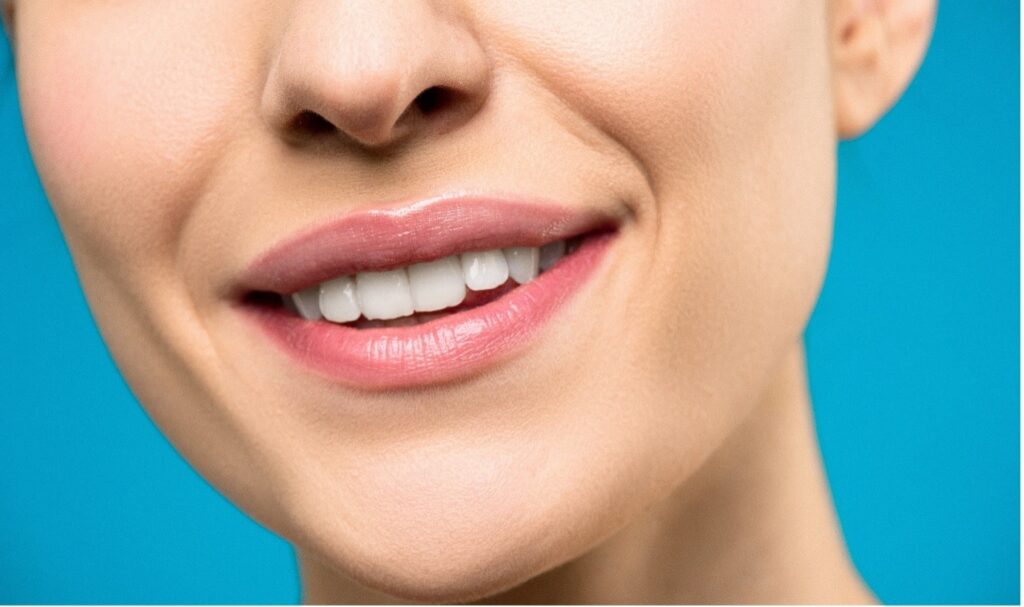When did you last think about how much your dental hygiene impacts your daily life? They’re not just for chewing and smiling – they’re also crucial for speaking and communicating effectively. That’s why it’s so important to prioritize your dental hygiene, not just for your appearance but for your overall health and well-being.
Now, let’s talk about the other side of the coin – what happens when you neglect your dental hygiene? Poor dental health can lead to many issues, from cavities and gum disease to chronic bad breath. That’s why it’s crucial to take proper care of your teeth through regular dental checkups, good dental hygiene practices, and even considering dental insurance and braces for adults, if necessary.
This post will cover everything from preventing common dental problems to treating them. So are you ready to learn everything you need about caring for your teeth? Let’s begin!
Common Dental Issues and How to Treat Them
You might deal with various dental issues, from mild sensitivity to more severe problems. The good news is that nearly all dental cases are treatable! With proper care and treatment, you can prevent further damage and maintain a confident smile. Here’re some common dental issues and their treatment options as recommended by the Best Dentist in Dubai.
Misaligned or Crooked Teeth
Misaligned teeth, or malocclusion, refer to teeth not correctly positioned or aligned. Malocclusion can cause various problems, including difficulty biting or chewing, speech problems, and even jaw pain.
Nearly 90% of the world’s population has some form of misaligned teeth. Various factors, including inherited tooth structure, your habits, poor dental hygiene, and age, can cause misaligned teeth.
Treatment Options
Orthodontic treatment can help reposition your teeth, enhancing your smile and self-confidence. When considering orthodontic treatment, people often compare Invisalign vs. braces for adults, weighing the benefits of clear aligners that are less noticeable and removable versus traditional braces that can be more effective for complex dental issues. So let’s explore both these treatment options to figure out which one’s best for you:
1. Braces for Adults and Teens
Braces are a traditional treatment option for misaligned teeth, which use metal or ceramic brackets and wires attached to the teeth and adjusted periodically by an orthodontist to gradually move the teeth into place.
Depending on your specific dental requirements and the severity of your teeth or jaw issues, you may have to use braces for 2-3 years. Metal braces are a good option for those with strong teeth and gums. However, they can be more painful and noticeable than ceramic braces. Consider clear or tooth-colored ceramic braces if you don’t want your braces to be noticed as much.
2. Invisalign or Clear Aligners
Invisalign uses clear aligners made of plastic that are custom-fitted to your teeth to gradually shift them into the proper position. They are virtually invisible and can be removed for eating and cleaning, and this is why they’re a more popular choice than traditional braces for adults who prefer a more discreet treatment. In addition, they’re less noticeable and more convenient since they can be easily removed and replaced weekly. Clear aligners are usually recommended for minor alignment issues.
Ultimately, the best orthodontic treatment for you will depend on the specific condition of your teeth and your personal preferences. Therefore, it’s essential to consult with a qualified orthodontist to discuss the pros and cons of each option and determine the best course of action for your needs and goals.
Dental Cavities
Cavities, also known as dental caries, are areas of tooth decay that can cause small holes or pits in the teeth. They are caused by acid-caused bacteria and can be prevented through good dental hygiene.
Treatment for cavities typically involves removing the decayed portion of the tooth and filling the area with a dental filling, which can be made of different materials such as composite resin, amalgam, or gold.
Gum Disease
Gum disease, or periodontal disease, is an infection of the tissues that support the teeth. Left untreated can cause swelling, bleeding, and even tooth loss. In addition, research shows gum disease is linked to various health conditions, including diabetes, heart disease, kidney problems, osteoporosis, and malignancy.
Preventing gum disease is as simple as taking care of dental hygiene and visiting your dentist regularly. Gum diseases can be treated easily, but the treatment varies depending on the severity of the condition. Mild cases only require improved dental hygiene practices, while more advanced cases may need professional cleaning, scaling, or sometimes surgery.
Other common issues that are typically associated with poor dental hygiene include the following:
- Tooth Sensitivity
- Tooth erosion
- Tooth abscess
- Bad breath
- Tooth decay
- Receding gums
- Root infection
- Enamel erosion
Maintaining good dental hygiene and visiting your dentist regularly for checkups and cleanings are the simplest yet the most effective ways to prevent and treat teeth problems. So let’s explore some of the best dental hygiene practices and how they help prevent dental issues.
Good Dental Hygiene Practices
Dental hygiene is all about caring for your teeth and gums to prevent all the dental problems mentioned above. Good dental hygiene is essential not just for maintaining a beautiful smile but also for your overall health.
Let’s take a look at some standard dental hygiene practices you can follow to take care of your teeth and gums:
Brushing Your Teeth Twice a Day
First things first! Brushing your teeth is the most basic yet most important dental hygiene practice. Food remnants and bacteria stick to your teeth and gums when you eat. Over time, it leads to plaque build-up, cavities, and gum diseases.
Brushing your teeth removes those food particles and bacteria and keeps your teeth and gums healthy. It also helps remove stains from caffeinated drinks and keeps your teeth white and bright. Moreover, brushing your teeth helps prevent bad breath, leaving your mouth fresh and clean all day!
Brush your teeth twice a day or after each meal. Use fluoride toothpaste and a soft-bristled brush, and brush for at least two minutes each time.
Dental Flossing
Brushing alone cannot eliminate small food particles hiding below the gums or between spaces. This is where flossing comes to the rescue! Flossing removes the food particles and bacteria your toothbrush can’t reach and helps prevent gum disease.
It’s important to floss at least once daily and be gentle, so you don’t damage your gums. Here’s how to floss properly:
- Wrap a piece of floss around your fingers, leaving about 2 inches between your hands.
- Gently see the floss between your teeth with your thumbs and index fingers.
- Curve the floss into a C-shape around the base of each tooth and gently slide it up and down.
- Use fresh floss for each tooth as you move from one to another to prevent bacteria from spreading.
- Keep it gentle, and avoid snapping floss between your teeth.
- Rinse your mouth with water.
Eating a Healthy Diet
Your diet can have a significant impact on your dental health. Foods high in sugar and carbohydrates can contribute to tooth decay, while foods high in calcium and vitamin D can help strengthen your teeth. Eat a well-balanced diet with plenty of fruits, vegetables, and whole grains.
Seeing Your Dentist Regularly
Even if you follow all dental hygiene practices, seeing your dentist regularly is essential. Your dentist can help catch and treat any dental problems early and advise you on improving your dental hygiene routine.
Sometimes, dental treatments can be pricey, especially if you need more complicated procedures like fixing crooked teeth or dealing with gum disease. And unfortunately, many people end up avoiding dental care altogether because of financial concerns.
But there’s some good news! Dental insurance can help make dental care more affordable and accessible for you. How? Let’s look at some of the benefits of dental insurance.
Dental Insurance and Its Benefits
If you’re worried about the cost of dental care, dental insurance can be a great option to help you stay on top of your oral health without breaking the bank. It’s a type of insurance that covers the cost of dental care, and it can be obtained through your employer or purchased privately. Research shows that individuals with dental insurance are 2.5 times more likely to visit the dentist for preventive care, which can help catch and address dental issues early on and prevent more serious and costly problems.
With dental insurance, you can reduce the out-of-pocket costs associated with routine dental care and more extensive dental procedures like fillings, crowns, and root canals, which can be a real lifesaver.
Dental insurance can also give you peace of mind, knowing you’re covered for unexpected dental issues. And some dental insurance plans even offer incentives or discounts for good oral health habits, like brushing and flossing regularly.
When choosing a dental insurance plan, it’s essential to consider the benefits and limitations of each project. For example, some plans may have a waiting period for certain services or require you to stay within a network of providers. Additionally, some programs may cover a more significant percentage of the cost of preventative care, like regular checkups and cleanings. In contrast, others may focus more on coverage for major dental procedures. So choosing a plan that aligns with your needs is essential.
Final Thoughts on Dental Hygiene
Taking care of our teeth is essential for our overall health and well-being. By practicing good dental hygiene, going to the dentist for regular checkups, and having dental insurance, you can keep your teeth healthy and avoid any potential dental problems down the road.
Remember, caring for your teeth is an investment in your overall health and happiness. Keeping your teeth in perfect shape can prevent painful dental problems, maintain a bright smile, and feel confident in your overall appearance. So don’t forget to prioritize your oral health and care for those pearly whites!
If you or someone you know is looking to improve your health, share this article on Facebook or Twitter so that others can learn more about self-care.




